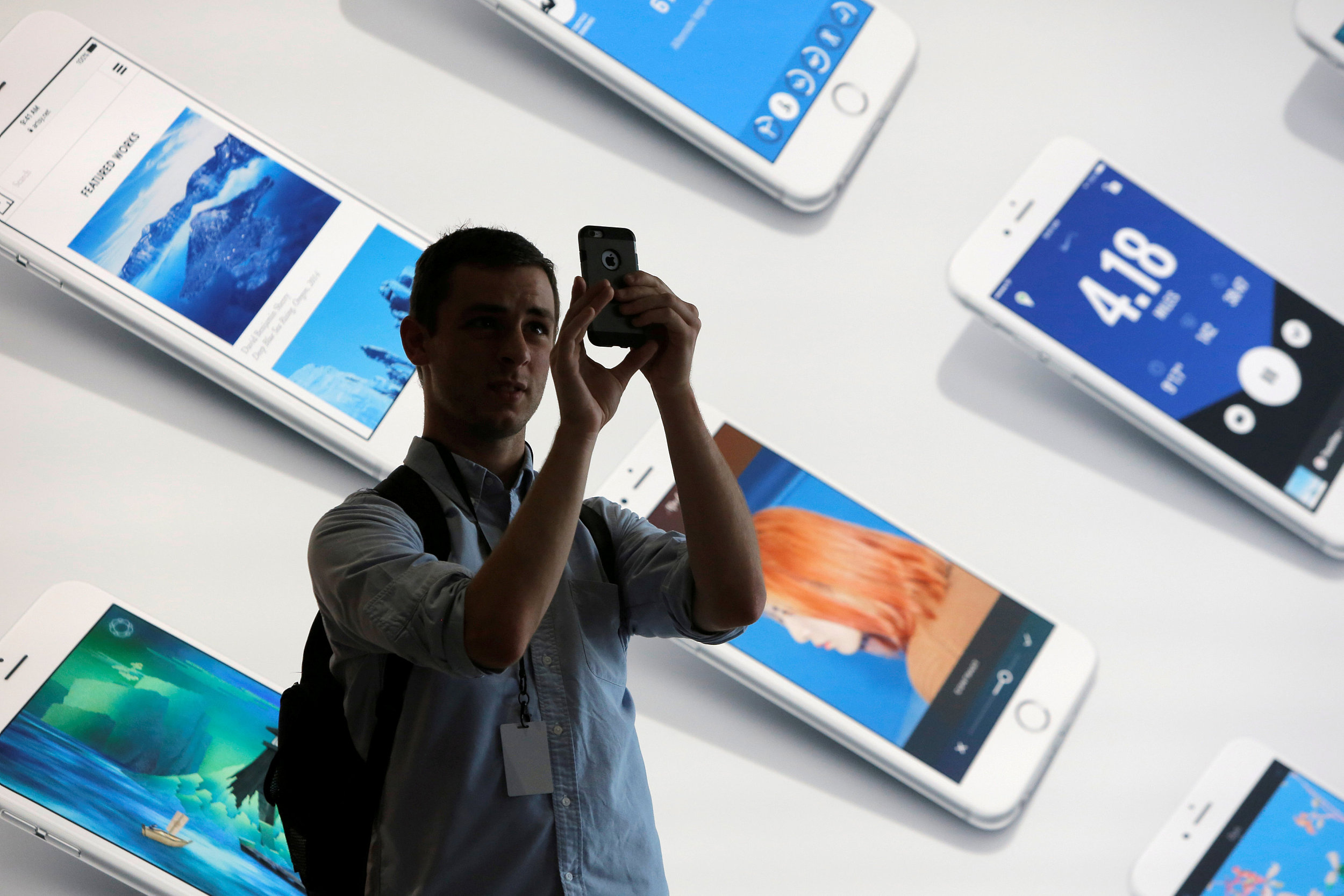iPhone:从6个方面改变了世界

|
不知不觉间,iPhone已经走过了十个年头。十年一个里程碑,有人或许会觉得有些不真实感,仿佛这款手机是自来就有的。其实,乔布斯站在旧金山的发布会舞台上将iPhone第一次介绍给消费者的那一幕,很多人至今依然历历在目。十年弹指一挥间,不知不觉间,iPhone已经让这个世界变了一副模样。要想完完全全总结它对全世界的影响,其实是很难的。 当我们说到iPhone以及它对世界的影响时,有几件事情是我们经常提起的,比如它的应用程序,它如何加速了人与人的联系(当然,它也总是那么勾魂,总是让人分心,叫我们没法好好工作),以及它那简约的工业设计。除了这些因素之外,iPhone其实还给世界带来了一些同样具有革命性的变化。 多点触控的大范围应用 我们之所以只用几根手指就能完成与智能机的交互,这主要归功于多点触控技术。现在,使用智能手机的人已经比使用传统PC的人多了好几亿。我们有大量信息的传送都是通过触屏完成的。而iPhone正是第一款大规模市场化的消费级多点触控产品,并且取得了巨大的成功。 今天,你已经很难找到一台没有多点触控屏的手机或平板电脑了。每次我们看到一款无键盘的智能设备,就会自然而然地认为,我们可以用手指在上面滑动、缩放和拖动。而这完全要感谢iPhone。 可玩性强的用户界面 曾在苹果公司担任用户界面设计师和早期iPhone构建师的巴斯·奥尔丁曾经对我说:“我一直搞不清楚,以前的软件为什么做得那么无聊。”直到世纪之交时,一般软件的用户界面依然做得十分乏味。iPhone人性化界面部门负责人格雷格·克里斯蒂称,当时的软件界面“不是按钮就是按键”。而iPhone的软件设计团队却彻底改变了这一历史。奥尔丁受早期视频游戏的启发,给iPhone的操作系统设计了很多令人愉快的触摸效果——比如当你把网页翻到最底部时的“橡皮筋”反馈效果;再比如轻轻抖动的图标,和看起来相当酷炫的应用等。 最高效的供应链 一个苹果养活了好几家中国的大工厂。但是早在苹果之前,就有不少欧美企业将生产外包到了中国。在iPhone之前,“美国原产”曾一度是苹果用来自我标榜的一个卖点,而且它的“美国原产”的历史比大多数竞争对手都长得多。但是到了iPhone时代,苹果已经把代工玩到了极致。蒂姆·库克当上运营总监后,他把各个盘根错节的零部件工厂压成了一根绷得紧紧的弹簧,几十万装配工人都在围绕这个设备服务,这条供应链具有很大的张力,完全可以满足苹果对产能的需求。通过供应商之间的紧密协作,以及尽可能从劳动力中压榨出更高的效率,库克将现代化的设备生产引向了一个新台阶——当然同时也引来了不少人权方面的抨击。 传感器浪潮 从它诞生的第一天开始,iPhone就用上了包括加速计和近距离传感器在内的各种传感器,使它简直成了一款有魔法的产品——比如打电话的时候屏幕会变黑,这样你就不用担心你的耳朵会误触屏幕,另外随着你握持姿式的变化,它还会自动变成竖屏或横屏模式。iPhone可以说是软件与硬件的完美结合,它设立了智能设备的标杆,掀起了一股大规模运用传感器的浪潮。今天,除了早期iPhone上的那些传感器外,陀螺仪、指纹扫描器等传感器也早已成为智能手机的标配。如果没有这些传感器,有些最有影响力的iPhone游戏甚至根本都玩不了。 智能个人助手 人们一开始只把Siri当成一个新奇的玩意,而不是一个强大的用户界面。Siri刚刚发布时,遭到了人们的广泛嘲笑。但Siri确实是第一个走向主流的人工智能用户助手,它为基于语音识别技术的用户界面开辟了道路。虽然有人指出,亚马逊的Alexa和谷歌助手已经在功能性和实用性上超过了Siri,但毫无疑问,Siri才是第一代正宗的智能语音助手。 开启全新经济业态 我们可能还没有完全意识到,苹果所催生的“应用经济”的规模究竟有多大。一位知名行业分析师曾指出,苹果开启的“应用经济”要超过整个好莱坞的规模。 在苹果的营收中,应用贡献的收入只是九牛一毛——iPhone的销售收入才是苹果营收的大头。然而诞生仅仅十年后,iPhone的价值已经远远不是几个好莱坞能够比拟的。(财富中文网) 本文作者Brian Merchant是《The One Device: The Secret History of the iPhone》一书的作者,也是科技网站Motherboard的编辑。 译者:朴成奎 |
The iPhone turns 10 years old this year, and it's a landmark that can feel a little surreal. Somehow, it seems like the device has existed forever, yet that image of Steve Jobs standing on a San Francisco stage and bequeathing the iPhone unto the masses feels as vivid as ever. The iPhone has changed so much, so seamlessly, in such a short amount of time, it's hard to grapple with the full scale of its impact. There are a few things that most commonly get cited when we talk about the iPhone and its imprint on the world—its apps, how it accelerated mass connectivity (and its nefarious alter-ego, constant distraction), or its sleek industrial design. But there are a host of others shifts the iPhone ushered in that are equally, if not more, revolutionary. Multi-touch for the masses It’s a little remarkable that we don’t spend more time talking about multi-touch, the technology that allows us to fluently speak to computers with our fingers. Many hundreds of millions more people use smartphones than traditional PCs; we transmit information by touch, on screens. The iPhone was the first mass-market consumer product to feature a multi-touch-capable screen that really sung. Today, you’d be hard-pressed to find a phone or a tablet that doesn’t have a multi-touch-powered screen. When we approach a smart screen without a keyboard attached, we naturally assume we’ll be able to swipe, pinch, zoom, and drag pixels around at our whim—that’s entirely thanks to the iPhone. Playful user interface “I never got why software had to be boring,” former Apple user interface designer and early iPhone architect Bas Ording told me. As recently as the turn of the century, user interface design was as deadly dull as it sounds. It was “all knobs and dials,” Greg Christie, head of Apple’s Human Interface Group, told me. The software design team that engendered the iPhone would change that forever. Ording, inspired by early video games, baked pleasant little touches—the “rubber banding” effect when you scroll to the end of a list, jiggling icons, and stylish-looking apps—into the iPhone operating system. Maximum-efficiency supply chains Companies were outsourcing manufacturing long before Apple sped the rise of device megafactories in China—in fact, Apple proudly manufactured its products in the U.S. much longer than most of its competitors did—but the iPhone drove the practice to perfection. When he was head of operations, Tim Cook coiled Apple’s tangled cluster of component factories into loaded spring, manned by hundreds of thousands of laborers, that could be unleashed to meet demand. By grouping suppliers together in close proximity so that they could rapidly collaborate to address changes in hardware or design, and demanding new untold levels of efficiency from the workforce, he set the stage for the modern model of device manufacturing—and the human rights woes that accompany it. The sensor boom From day one, the iPhone made use of a wide array of sensors, from an accelerometer to a proximity sensor, to make it feel more like magic—the screen would go dark so you wouldn’t touch buttons with your ear, or it’d seamlessly switch into landscape mode. An elegant marriage of software and hardware, the iPhone both set the standard for a smart device, and set off the sensor boom. Today, these early tools share space with a gyroscope, fingerprint scanner, and other enhancements—many of the iPhone’s most influential games and apps would be powerless without them. The intelligent personal assistant Siri may have been more of a novelty than a powerful interface at first, and it was widely derided upon launch. But as the first mainstream, user-facing artificially intelligent assistant, it blazed a clear trail for a voice-operated user interface. Even though critics argue that Amazon’s Alexa or Google Assistant have surpassed Siri in terms of power and usefulness, there’s little doubt who ushered in the boom. A brand new economy We still may not quite have internalized the sheer scale of the app economy that Apple spawned. It is, as a top Apple and technology industry analyst has argued, bigger than Hollywood. Apps make up just a small, almost invisible sliver of Apple’s revenue—which is still dominated by iPhone sales. Just a decade after its creation, the iPhone is bigger than too many Hollywoods to count. Brian Merchant is author of The One Device: The Secret History of the iPhone and an editor at Motherboard, Vice's science and technology site. |











